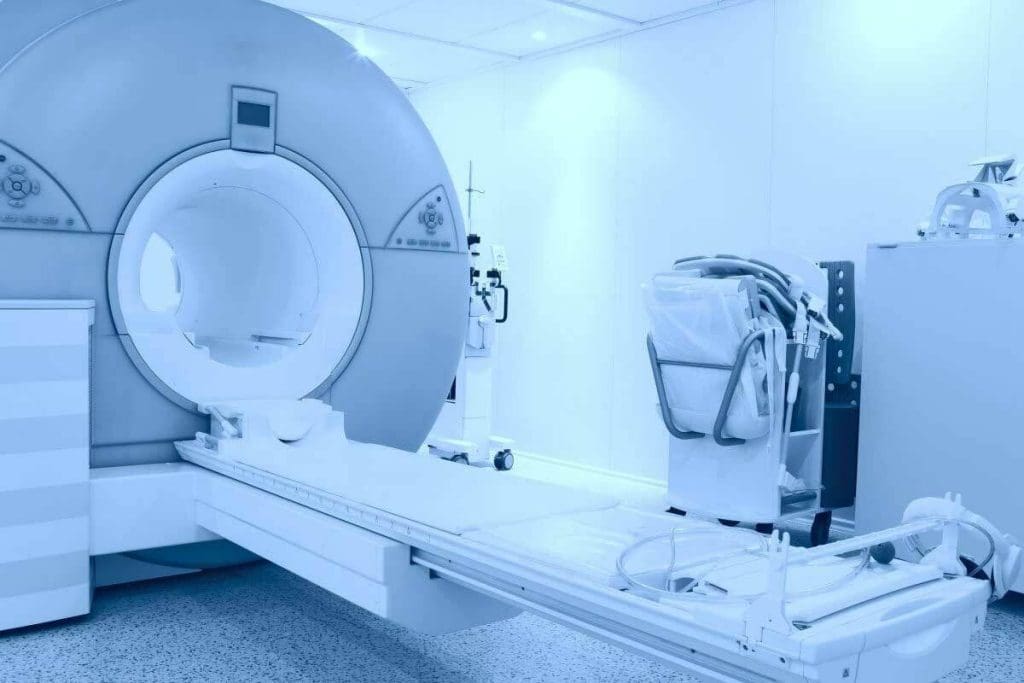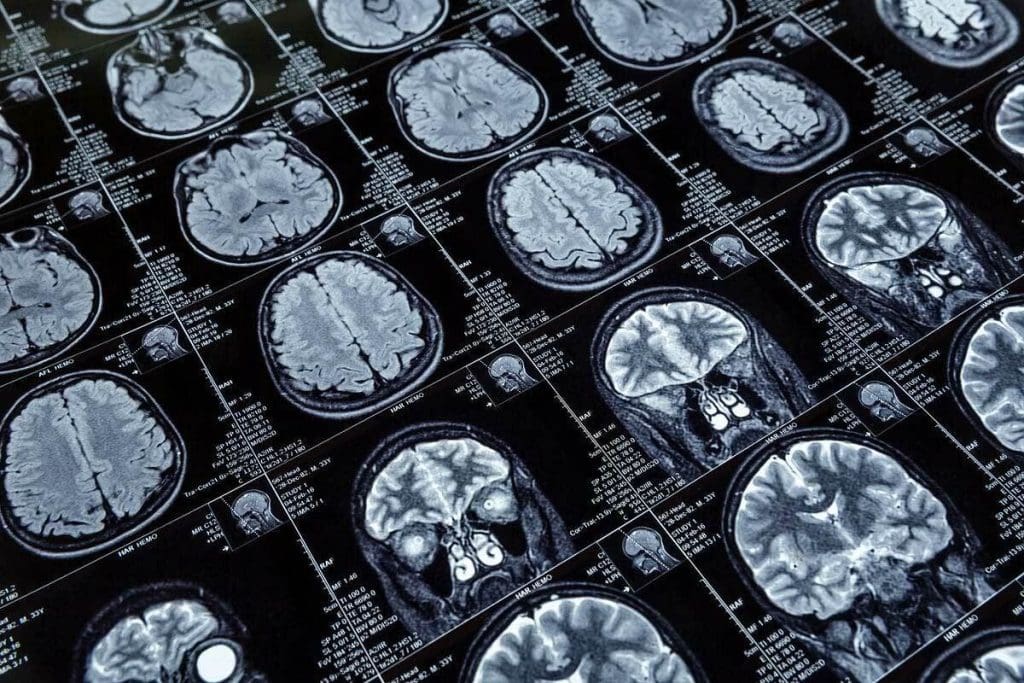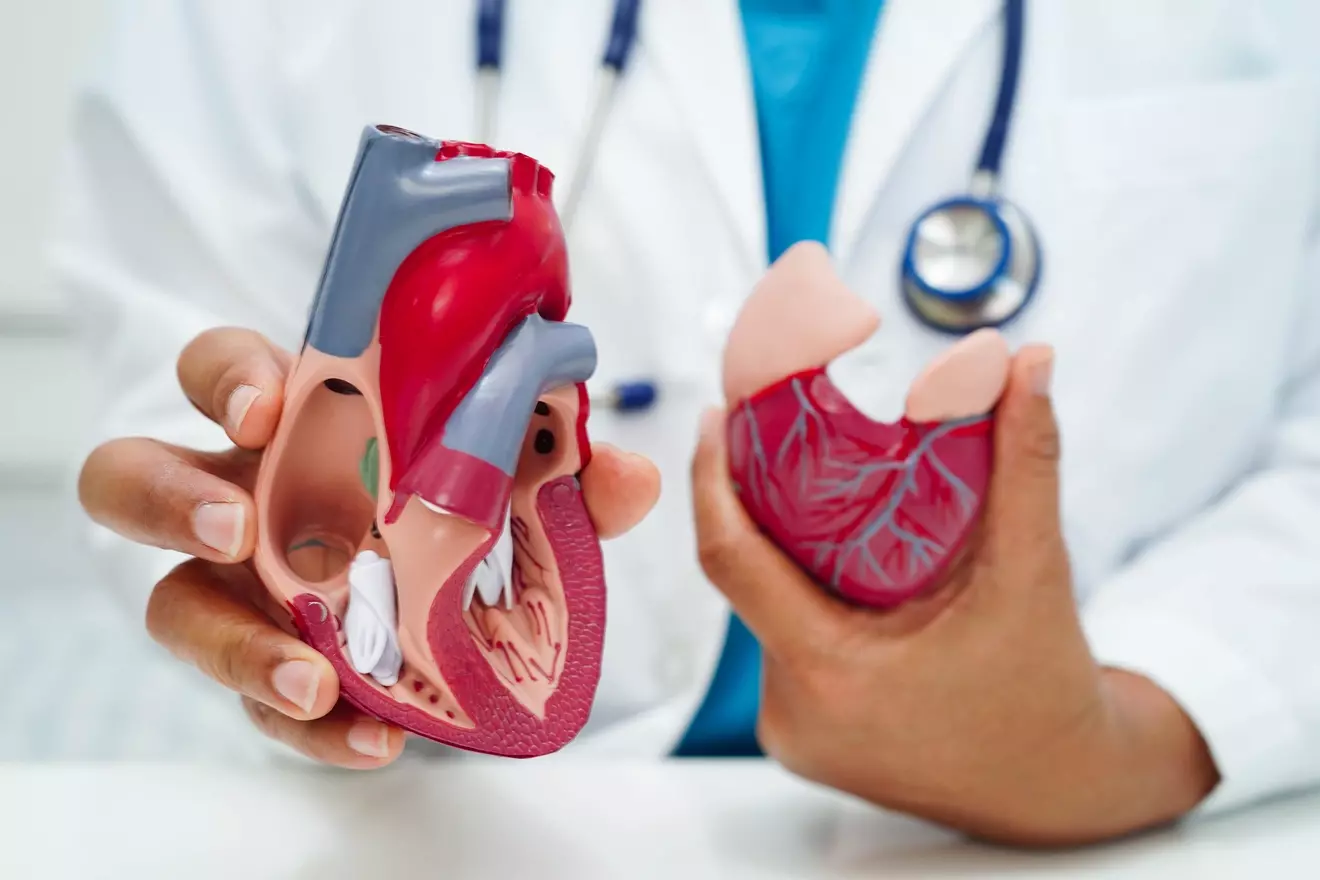Last Updated on November 27, 2025 by Bilal Hasdemir

At Liv Hospital, we use the latest in medical imaging to help our patients. The 18F FDG PET CT scan is a key tool. It finds cancer cells by looking at how they use energy.
The 18F FDG PET CT scan has changed how we fight cancer. Doctors can now find, check, and track cancer more accurately. PET scans are needed for some cancers, like brain cancer and melanoma.
Let’s dive into the 8 main points about the 18F FDG PET CT scan. It’s a key part of modern cancer treatment. We’ll see how it helps in finding, checking, and treating cancer.
Key Takeaways
- The 18F FDG PET CT scan is a critical tool in oncologic imaging.
- It is used for diagnosing, staging, and monitoring cancer treatment.
- PET scanning is considered medically necessary for certain types of cancer, including brain cancer and malignant melanoma.
- The technology detects metabolic activity in cancer cells, providing precise diagnostic information.
- Advances in PET CT technology have improved patient outcomes in cancer care.
The Fundamentals of 18F FDG PET CT Technology

We dive into the basics of 18F FDG PET CT and its importance in medical imaging today. It combines PET’s metabolic info with CT’s body details. This mix gives us a full view of what’s happening inside us.
What is Fluorine-18 Fluorodeoxyglucose (18F-FDG)?
18F-FDG is a special sugar that cells use, like cancer cells. It has a radioactive tag that lets us see it on PET scans.
Using 18F-FDG in PET scans helps spot changes in cell activity. This is key for finding cancer.
“The mix of PET and CT gives us a full view of the body. It shows both what’s inside and how it’s working.”
How PET and CT Integration Creates Comprehensive Images
When we combine PET and CT, we get a clearer picture of our body. CT shows us the body’s layout, while PET shows how active it is. Together, they give us a detailed look at what’s going on inside.
- PET shows how active cells are
- CT shows the body’s layout
- Together, they help us see better
Key Fact #1: The Metabolic Advantage of FDG in PET Scan Detection
FDG’s big plus is how it finds cells that use a lot of sugar, like cancer cells. This lets 18F-FDG PET CT scans spot tumors that CT scans can’t see.
The benefits of 18F-FDG PET CT are many:
- It finds tumors that are active
- It shows how cancer spreads
- It checks if treatment is working
Learning about 18F FDG PET CT helps us see its big role in fighting cancer. It’s a key tool for better patient care.
The Science Behind 18F FDG Metabolic Imaging

18F FDG PET CT is key in fighting cancer because it shows how tumors work. It does this by looking at how fast cells in tumors and normal cells use energy.
Glucose Metabolism and Cancer Cell Detection
Cancer cells use more glucose because they grow fast. This is called the “Warburg effect.” 18F FDG, a glucose-like substance, is used by cells instead of glucose, helping find cancer.
A study in Nature says cancer cells use more glucose. This is why 18F FDG PET CT scans can spot and track cancer.
Radiotracer Distribution and Uptake Mechanisms
After it’s given, 18F FDG spreads through the body. It goes into different tissues. Cancer cells take up more 18F FDG because they have more glucose transporters.
Key Fact #2: Why Cancer Cells Show Increased FDG Uptake
Cancer cells take up more 18F FDG because they use more glucose. They also have more glucose transporters. This makes it easier to see cancer with 18F FDG PET CT scans.
| Characteristics | Cancer Cells | Normal Cells |
| Glucose Metabolism | High | Low |
| Glucose Transporter Expression | Overexpressed | Normal Expression |
| 18F FDG Uptake | High | Low |
Knowing how 18F FDG PET CT works helps doctors understand scan results better. It shows how valuable this tool is in fighting cancer.
Primary Clinical Applications of 18F FDG PET CT in Oncology
18F FDG PET CT is key in modern oncology. It helps with accurate diagnosis, staging, and treatment monitoring. This advanced imaging gives us deep insights into cancer’s metabolism and spread. It helps doctors make better decisions.
Initial Cancer Diagnosis and Accurate Staging
The 18F FDG PET CT scan is vital for cancer diagnosis and staging. It shows areas of high metabolic activity. This helps find primary tumors and detect metastases.
This info is key for knowing how far the disease has spread. It guides treatment plans.
Treatment Response Assessment and Therapy Modification
We use 18F FDG PET CT to check treatment response. It tracks metabolic activity changes over time. This lets doctors see if treatment is working and adjust as needed.
This is very helpful for cancers that respond well to certain treatments.
Recurrence Detection and Long-term Surveillance
18F FDG PET CT is also key for finding cancer recurrence and long-term monitoring. Its high sensitivity lets us catch disease early. This means we can act quickly and possibly improve outcomes.
Key Fact #3: Superior Sensitivity for Malignancy Detection
The 18F FDG PET CT scan is better at finding cancers than other methods. It shows metabolic differences between cancer and normal tissues. This makes it a powerful tool against cancer.
Using 18F FDG PET CT improves diagnosis, treatment plans, and patient care in oncology.
Beyond Cancer: Expanding Uses of FDG PET Imaging
FDG PET imaging is more than just for cancer. It’s used in many areas of medicine. We’re seeing it used in new ways across different medical fields.
Applications in Neurodegenerative Disease Assessment
FDG PET imaging is changing how we look at brain diseases. It checks how active the brain is, helping spot Alzheimer’s and other brain problems. This way, FDG PET helps track how these diseases grow and if treatments work.
Evaluation of Inflammatory and Infectious Conditions
FDG PET is also great for spotting inflammation and infections. It finds where the body is working too hard, helping doctors figure out what’s wrong. This is super helpful for diseases like vasculitis and abscesses, where knowing how active the disease is is key.
Key Fact #4: Growing Utility in Non-Oncologic Conditions
The use of FDG PET imaging is growing in non-cancer areas. As research finds new uses, FDG PET will play an even bigger role in medicine. This will help us diagnose and treat many diseases better.
Patient Experience: Preparing for an F18 FDG PET Scan
To have a smooth F18 FDG PET scan, patients need to follow certain steps. Knowing these can help lower anxiety and make the scan go well.
Pre-Scan Requirements and Dietary Restrictions
Before an 18F FDG PET scan, patients must follow some rules. These are key for getting clear images.
- Fast for 4-6 hours before, only drinking water.
- Don’t do hard exercise for 24 hours before to avoid muscle uptake.
- Tell your doctor about any meds, like diabetes ones, as they might need to change.
- Make sure blood sugar is under 200 mg/dL for the best 18F-FDG uptake.
For more on how to prepare, check out medical policy documents on PET scans.
The Step-by-Step Procedure Explained
The FDG PET CT scan process has several steps:
- Change into a comfy gown and remove metal items when you arrive.
- Get an 18F FDG radiotracer injection in your arm.
- Wait 60 minutes for the radiotracer to take effect, staying calm and not moving.
- The PET CT scan takes about 30-60 minutes.
- After, you can go back to your usual activities unless told not to by your doctor.
Post-Scan Care and Results Timeline
After the F18 FDG PET scan, you can usually go back to your daily life. But remember to:
- Drink lots of water to clear out the radiotracer.
- Avoid being close to pregnant women, babies, and young kids for a few hours because of the radiation.
The scan results will be ready in a few days to a week. The exact time depends on the place and your doctor’s needs.
| Procedure Step | Description | Time Required |
| Preparation | Changing into a gown, removing metal objects | 15 minutes |
| Radiotracer Injection | Administration of 18F FDG | 5 minutes |
| Uptake Period | Waiting period for radiotracer uptake | 60 minutes |
| PET CT Scan | Actual scanning procedure | 30-60 minutes |
Innovations in 18F FDG PET Scan Protocols
New tech in PET scans is making diagnosis better and safer. Advances in 18F FDG PET scan protocols are key to better patient care and more accurate tests.
Ultra-Low Activity Techniques for Reduced Radiation
One big step is using ultra-low activity techniques. These methods use less radioactive tracer, cutting down on radiation for patients. Research shows these methods keep test quality high while lowering radiation doses. This is great for kids and those needing many scans.
Advanced Reconstruction Algorithms for Image Enhancement
Another big leap is in image algorithms. These improve picture quality and help spot small issues. Advanced math and machine learning make images clearer, helping doctors make better diagnoses.
Key Fact #5: Maintaining Diagnostic Accuracy While Reducing Exposure
It’s important to keep tests accurate while using less radiation. Studies show combining ultra-low activity and new algorithms can do just that. This is key for these new methods to become common in hospitals.
We’re moving towards safer, more focused tests in 18F FDG PET imaging. As tech gets better, we’ll see even more improvements in how scans are done, focusing on safety and accuracy.
Radiation Safety and Dose Considerations in FDG PET CT
Radiation safety is key when using FDG PET CT scans. These scans are used more often for diagnosis. It’s important to know the radiation they use and how to stay safe.
Understanding Effective Radiation Dose Levels
The dose from an 18F FDG PET CT scan is something to think about. It combines doses from the PET and CT parts. The total dose depends on the patient’s size, the scan protocol, and the equipment used.
Typical Effective Dose Ranges:
| Modality | Typical Effective Dose (mSv) |
| 18F FDG PET CT | 5-25 |
| PET Component | 4-10 |
| CT Component | 1-15 (varies with CT protocol) |
Special Protocols for Pediatric and Radiation-Sensitive Patients
For kids and those who are more sensitive to radiation, we have special plans. We use less 18F-FDG and adjust the CT settings.
Key Adjustments for Pediatric Patients:
- Reduced administered activity of 18F-FDG based on weight
- Optimized CT protocols with lower kVp and mAs
- Iterative reconstruction techniques to improve image quality at lower doses
Comparing Radiation Exposure to Other Imaging Modalities
It’s good to compare the radiation from 18F FDG PET CT to other imaging methods.
| Imaging Modality | Typical Effective Dose (mSv) |
| Chest X-ray | 0.1 |
| CT Chest | 7 |
| 18F FDG PET CT | 5-25 |
Knowing these comparisons helps doctors choose the best imaging for patients. They can balance the need for clear images with keeping radiation low.
Interpreting 18F-FDG PET CT Results: The Diagnostic Process
To understand 18F-FDG PET CT results, we need to know about glucose use, where the activity is, and the patient’s health history. This complex task requires a deep grasp of how 18F-FDG PET CT imaging works. It also needs knowledge of how to use this understanding in different medical situations.
Understanding SUV Values and Metabolic Hotspots
The Standardized Uptake Value (SUV) is key in 18F-FDG PET CT imaging. It shows how much of the radiotracer is taken up in a certain area compared to the whole body. High SUV values often mean areas with more metabolic activity, which can be cancerous.
Metabolic hotspots are areas with more 18F-FDG uptake, showing higher glucose use. These spots are important for finding and checking the spread of cancer.
Differentiating Malignant from Benign Conditions
It’s a big challenge to tell apart malignant from benign conditions in 18F-FDG PET CT results. While many cancers show high 18F-FDG uptake, some non-cancerous conditions can too. It’s often necessary to use clinical information and other imaging tests to make a sure diagnosis.
| Characteristics | Malignant | Benign |
| SUV Value | Typically higher | Variable, often lower |
| Pattern of Uptake | Often heterogeneous | Usually homogeneous |
| Clinical Context | History of cancer or risk factors | Inflammatory or infectious conditions |
Common Pitfalls and Interpretation Challenges
Reading 18F-FDG PET CT scans can be tricky because of several factors. These include image problems, normal variations in uptake, and conditions that look like cancer but aren’t. Knowing these common issues is key to accurate reading.
Key Fact #6: How FDG PET Radiology Distinguishes Tumor from Healthy Tissue
FDG PET radiology uses glucose metabolism to tell tumors from healthy tissue. Tumors take up more glucose because they use a lot of energy, making them visible on 18F-FDG PET CT scans. This difference in metabolism helps spot and understand tumors, even in hard-to-see areas.
Comparative Advantages of FDG PET CT Imaging
FDG PET CT is a key tool in today’s medicine. It combines functional and anatomical imaging. This gives doctors detailed info to help decide on treatments.
Benefits Over Conventional CT, MRI, and Ultrasound
FDG PET CT has big advantages over other imaging methods. Unlike CT scans, it shows more than just body structure. MRI gives soft tissue details, but FDG PET CT adds metabolic activity to anatomical views. This helps spot and understand lesions better, even in hard-to-reach areas.
It beats ultrasound by giving a broader view of the body. This is great for checking both nearby and far-off disease sites. It’s super helpful in cancer staging and tracking how treatments work.
Clinical Scenarios Where FDG PET CT Excels
FDG PET CT shines in many areas, like finding and tracking cancer. It’s top-notch at spotting active cancer cells and seeing how far the disease has spread. It also checks if treatments are working.
- Cancer staging and restaging
- Treatment response assessment
- Detection of unknown primary tumors
- Monitoring of disease recurrence
In these cases, FDG PET CT gives vital info. This info can change treatment plans and help patients get better.
Key Fact #7: Whole-Body Assessment in a Single Examination
FDG PET CT is great because it checks the whole body at once. This lets doctors see how far disease has spread. They can find both close and far-off metastases.
This all-in-one view is super useful for managing cancer and other diseases. It helps doctors stage diseases more accurately and plan treatments better.
Accessibility and Economics of 18F FDG PET CT in the United States
The use of 18F FDG PET CT in the U.S. is both common and complex. It has changed how we manage patients, but getting access to it is not easy. Many things affect how easy it is to get a PET CT scan.
Insurance Coverage and Reimbursement Considerations
Insurance is key to getting a PET CT scan. Most insurance, including Medicare and Medicaid, covers PET CT for certain reasons, like finding and checking cancer. But, how much they cover can change, and patients might have to pay extra for some things.
“The money side of PET CT scans is tricky, with different rules for each insurance,” a study says. “Healthcare workers need to understand this to handle the money side well.”
Regional Availability and Access Challenges
Where you live also affects your access to PET CT. Big cities usually have more PET CT places, but small towns and rural areas have fewer. This can mean patients in these areas get diagnosed and treated later.
To fix this, there are mobile PET CT units and telemedicine. These help reach more people, but setting them up needs careful planning.
Cost-Effectiveness in Patient Management
Even though PET CT scans cost money upfront, they can save money in the long run. They help find the right treatment by giving accurate information. This can stop unnecessary tests and treatments, saving money.
A study in a top medical journal showed that PET CT in cancer care can save money. It does this by cutting down on extra tests and improving treatment results. This shows that using PET CT can be good for your wallet and health.
In summary, getting a PET CT scan in the U.S. is influenced by many things. Insurance, where you live, and how it saves money are all important. As healthcare changes, knowing about these points will help make PET CT scans more available to patients.
Future Directions in FDG PET Imaging Technology
The future of FDG PET imaging is looking bright with new tech. We’re seeing big changes in how this technology is used. It’s changing how we do medical imaging.
Emerging Technological Advancements
New tech is making FDG PET imaging better. Advanced PET detectors are now part of scanners. They help spot metabolic activity more accurately.
New reconstruction algorithms are also key. They make images clearer and reduce noise. This helps doctors make better diagnoses.
Integration with Artificial Intelligence and Machine Learning
Artificial Intelligence (AI) and Machine Learning (ML) are changing FDG PET imaging. AI helps doctors see things they might miss. It’s a big help in reading images.
ML is making images better too. It learns from lots of data to improve how images are made. This could lead to better care for patients.
Key Fact #8: Evolution Toward Personalized Imaging Protocols
FDG PET imaging is getting more personal. We’re using new tech and AI to tailor scans for each patient. This could make diagnoses more accurate and safer.
This personal touch could also make scans more comfortable for patients. As we keep improving, FDG PET imaging will play a bigger role in healthcare.
In short, the future of FDG PET imaging is very exciting. With new tech, AI, and ML, and a focus on personal scans, we’re on the verge of big changes in medical imaging.
Conclusion: The Evolving Impact of 18F FDG PET CT in Modern Medicine
Throughout this article, we’ve seen how 18F FDG PET CT is key in cancer diagnosis and treatment. It combines PET and CT to give us detailed images. These images help us understand how the body works and its structure.
New advancements in 18F FDG PET CT have made it better for diagnosing and treating diseases. We’ve seen new techniques and algorithms that improve its use. Now, it’s not just for cancer but also for studying the brain and inflammatory diseases.
The future of 18F FDG PET CT is bright, with new tech and AI on the horizon. As we learn more about how it works, we’ll get even better at diagnosing diseases. This means more accurate and effective treatments for patients.
In summary, 18F FDG PET CT is a vital tool in medicine today. It gives doctors both functional and anatomical information to make better decisions. As technology keeps improving, we expect even more progress in fighting complex diseases.
FAQ
What is 18F FDG PET CT and how does it work?
18F FDG PET CT is a way to see inside the body. It combines two technologies: PET and CT. This lets doctors see how the body works and its structure.
It uses a special tracer called 18F-FDG. This tracer goes to cells that use a lot of sugar, like cancer cells.
What is 18F-FDG and why is it used in PET scans?
18F-FDG is a special sugar that doctors use in PET scans. It goes to cells that use a lot of sugar, like cancer cells. This helps doctors find diseases like cancer, brain problems, and infections.
How do I prepare for an 18F FDG PET CT scan?
To get ready for a scan, you need to fast for a few hours. Don’t do hard exercise before. Tell your doctor about any medicines or health issues.You might also need to follow a special diet. Arrive early to get ready and registered.
What are the benefits of 18F FDG PET CT over other imaging modalities?
18F FDG PET CT is special because it shows how the body works and its structure. It finds diseases early and checks how treatments work. It’s great for looking at the whole body at once.
How is radiation exposure managed during an 18F FDG PET CT scan?
Doctors use the least amount of 18F-FDG needed for the scan. They also make sure the CT scan is set right. There are special plans for kids and people who are sensitive to radiation.
What are SUV values in 18F FDG PET CT, and what do they indicate?
SUV values show how much 18F-FDG a tissue takes in. Higher values mean the tissue is more active, often a sign of cancer.
Can 18F FDG PET CT be used for conditions other than cancer?
Yes, it’s used for many other conditions. This includes brain diseases like Alzheimer’s and infections. It shows how active tissues are, helping doctors understand the disease better.
Is 18F FDG PET CT covered by insurance, and what are the costs associated with it?
Insurance coverage for 18F FDG PET CT varies. It can be expensive, but it’s often seen as a good value. It helps doctors make accurate diagnoses and choose the right treatments.
What are the future directions in 18F FDG PET CT technology?
The future looks bright for 18F FDG PET CT. New scanners, better algorithms, and AI will improve it. These changes will help doctors make more accurate diagnoses and reduce radiation.
How does 18F FDG PET CT compare to other imaging modalities like CT, MRI, and ultrasound?
18F FDG PET CT is unique because it shows how the body works and its structure. CT and MRI are great for body details, and ultrasound is good for some things. But 18F FDG PET CT is best for finding diseases that use a lot of sugar in one scan.
References
- Kinahan, P. E., & Noll, D. C. (1999). A direct comparison between whole-brain PET and BOLD fMRI measurements of single-subject activation response. NeuroImage, 9(4), 430-438. Retrieved from https://pubmed.ncbi.nlm.nih.gov/10191171/






